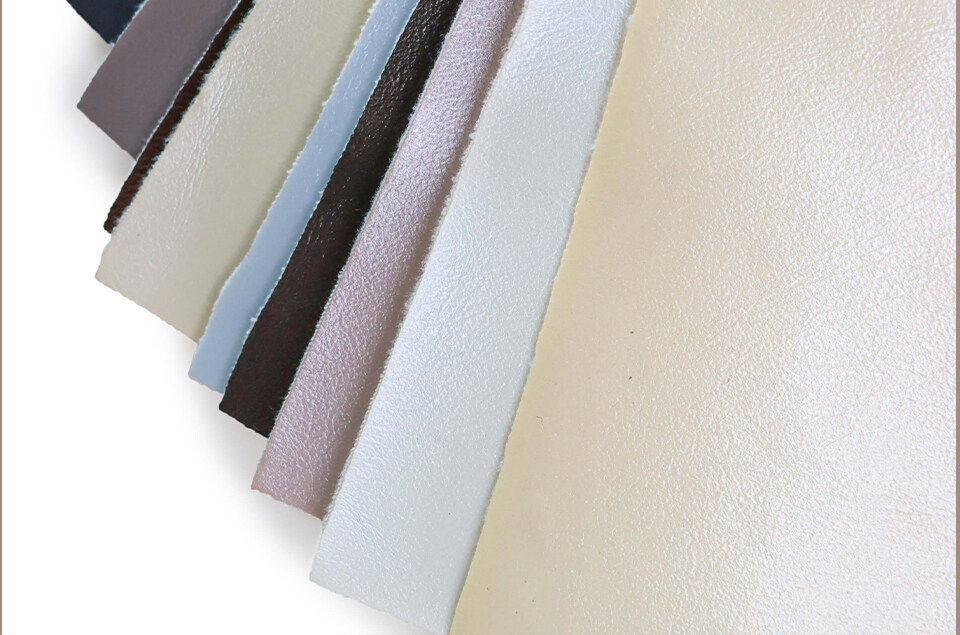Email format error
Email cannot be empty
Email already exists
6-20 characters(letters plus numbers only)
The password is inconsistent
Email format error
Email cannot be empty
Email does not exist
6-20 characters(letters plus numbers only)
The password is inconsistent

News

Exploring Synthetic Leather and PU Leather: Sustainable Alternatives to Genuine Leather
In recent years, as sustainability and ethical consumerism have gained momentum, the demand for alternatives to genuine leather has surged. Among these alternatives, synthetic leather and PU leather have emerged as popular choices, offering comparable aesthetics and durability without the ethical and environmental concerns associated with animal-derived materials. In this blog post, we delve into the world of synthetic leather and PU leather, exploring their composition, benefits, and applications, and shedding light on their role in shaping a more sustainable future for the fashion industry.
Understanding Synthetic Leather and PU Leather
Synthetic leather, also known as faux leather or vegan leather, is a man-made material designed to mimic the look and feel of genuine leather without using animal hides. It is typically composed of a fabric base coated with polyurethane (PU) or polyvinyl chloride (PVC) to create a leather-like texture. On the other hand, PU leather is a specific type of synthetic leather made by applying a layer of polyurethane to a fabric substrate, resulting in a material that closely resembles genuine leather in appearance and texture.
Benefits of Synthetic Leather and PU Leather
-
Animal-Friendly: Perhaps the most significant advantage of synthetic leather and PU leather is their cruelty-free nature. By eliminating the need for animal hides, these materials offer a compassionate alternative for consumers who prioritize animal welfare.
-
Environmental Sustainability: Unlike genuine leather, which requires the raising and slaughtering of animals, synthetic leather and PU leather are manufactured using synthetic materials that can be produced without harming animals. Additionally, advancements in production techniques have enabled the development of eco-friendly versions made from recycled materials or bio-based polymers, reducing their environmental footprint.
-
Durability and Versatility: Synthetic leather and PU leather are known for their durability and resistance to wear and tear. They are less prone to cracking, peeling, and fading compared to genuine leather, making them ideal for a wide range of applications, including apparel, accessories, upholstery, and automotive interiors.
-
Cost-Effectiveness: In addition to being more affordable than genuine leather, synthetic leather and PU leather offer cost-effective alternatives without compromising on quality or aesthetics. This accessibility makes them accessible to a broader range of consumers, democratizing sustainable fashion choices.
Applications of Synthetic Leather and PU Leather
Synthetic leather and PU leather are versatile materials that lend themselves to a myriad of applications across various industries:
- Fashion: From faux leather jackets and handbags to shoes and accessories, synthetic leather and PU leather are widely used in the fashion industry to create stylish and cruelty-free alternatives to genuine leather products.
- Furniture: In the realm of interior design, synthetic leather and PU leather are favored materials for upholstering furniture pieces such as sofas, chairs, and ottomans, offering a luxurious look and feel at a fraction of the cost.
- Automotive: The automotive industry utilizes synthetic leather and PU leather for upholstery and interior trims in vehicles, providing a durable and easy-to-maintain alternative to genuine leather.
Conclusion:
Synthetic leather and PU leather represent sustainable and ethical alternatives to genuine leather, offering comparable aesthetics, durability, and versatility without the environmental and ethical concerns associated with animal-derived materials. As consumers become increasingly conscious of the impact of their purchasing decisions, the demand for cruelty-free and eco-friendly alternatives continues to grow, driving innovation in the development of synthetic leather and PU leather. By embracing these materials, we can contribute to a more compassionate and sustainable future for the fashion industry and beyond.

